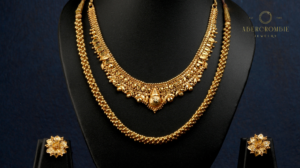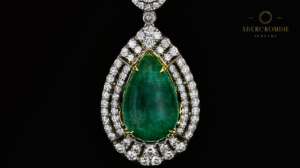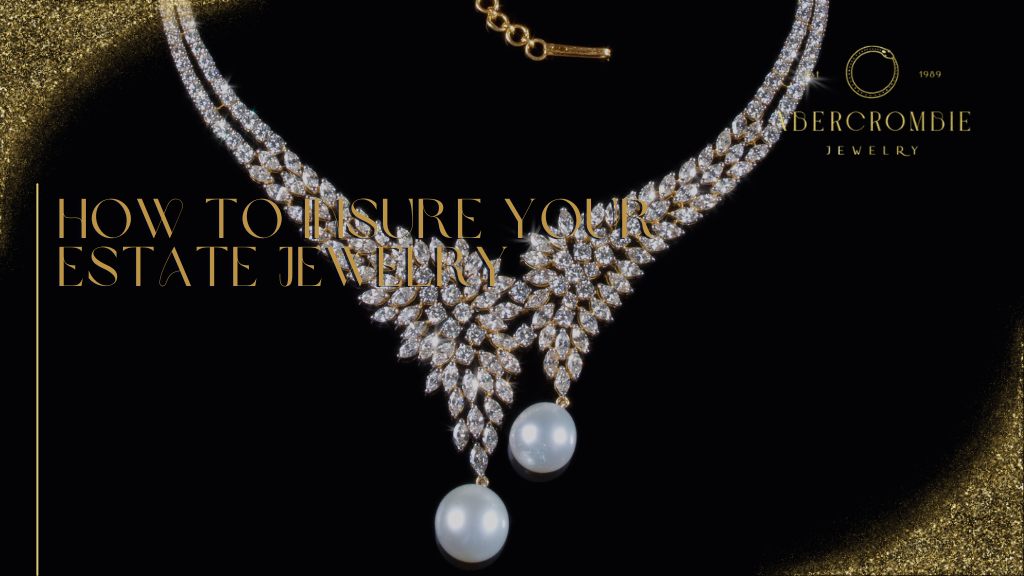For many, estate jewelry holds significant financial and sentimental value, making proper insurance essential. Understanding the insurance process can protect your cherished pieces whether you’re a collector, inheritor, or planning to sell. At Abercrombie Jewelry, we work with estate jewelry buyers in Austin to ensure every transaction is seamless and informed, including guidance on preserving the value of your jewelry through proper insurance. This guide will walk you through everything you need to know about insuring estate jewelry, including considerations when you buy estate jewelry and the importance of insurance options.
Why Insure Estate Jewelry?
Estate jewelry is often irreplaceable due to its unique history, craftsmanship, and emotional value. Unfortunately, these pieces are also at risk of being lost, stolen, or damaged, making insurance a crucial step in safeguarding their worth.




Key Reasons to Insure Estate Jewelry:
- Financial Protection: Insurance compensates for loss or damage, ensuring you don’t face a financial setback.
- Preserving Sentimental Value: While the emotional value of a family heirloom cannot be replaced, insurance can help fund repairs or a replacement piece.
- Preparation for Market Changes: The current market value of estate jewelry fluctuates, and an up-to-date policy reflects these changes.
How Jewelry Insurance Works
1. Choose the Right Insurance Policy
Not all insurance policies are created equal. Jewelry insurance is often available as an add-on to homeowner’s or renters insurance, but standalone jewelry insurance policies provide more comprehensive coverage.
What to Consider:
- Coverage Limit: Verify that the policy covers the full appraised value of your piece.
- Replacement Value vs. Fair Market Value: Decide whether you want the policy to reimburse you based on the item’s replacement value or its fair market value, which can vary depending on the source of the appraisal.
- Coverage Specifics: Look for protection against theft, damage, and even natural disasters.
2. Appraise Your Estate Jewelry
An accurate appraisal is the foundation of any jewelry insurance policy. Work with a certified jeweler or qualified appraiser to determine the value of your pieces, accounting for materials, craftsmanship, and market conditions. The replacement cost is often based on the price at a retail jewelry store.
Tips for a Quality Appraisal:
- Include details about gemstones, metals, and loose stones.
- Ensure the appraiser provides documentation for insurance purposes.
- Keep appraisals up to date, especially if market conditions shift significantly.
Ensure you get an accurate evaluation with our Estate Jewelry Appraisal services.
What Does Jewelry Insurance Cover?
Jewelry insurance coverage varies by provider but typically includes:
| Coverage Type | Details |
|---|---|
| Theft | Protection against stolen items, including burglary or mugging. |
| Loss | It covers items that are misplaced or lost entirely. |
| Damage | Includes repairs for loose stones, cracked metals, or broken settings. |
| Natural Disasters | Protects against floods, fires, or other environmental events. |
| Travel Coverage | Some policies extend coverage while traveling, ensuring protection abroad. |
Steps to Insure Your Estate Jewelry
1. Document Your Jewelry Collection
Start by creating a detailed inventory of your estate jewelry. Include photographs, descriptions, and any documentation, such as previous appraisals or certificates of authenticity.
Work with a Trusted Insurer
Research insurers specializing in high-value jewelry or luxury items. Many providers offer customizable plans that cater to estate jewelry buyers and sellers alike.
3. Assess the Cost of Insurance
Insurance premiums typically depend on the value of your jewelry and the level of coverage. Expect to pay between 1% and 2% of the insured value annually, with some premiums as low as $20 per year. For example, insuring a diamond ring valued at $10,000 may cost $100–$200 annually.
4. Update Your Policy Regularly
Maintain your policy by updating it whenever you acquire new pieces or notice significant changes in market conditions. For instance, if you add wedding bands, a necklace, or other high-value jewelry to your collection, ensure these items are reflected in your coverage.
Common Mistakes to Avoid
1. Neglecting Regular Appraisals
An outdated appraisal may not reflect the current market value, potentially leaving you underinsured. Generally, it is recommended to schedule appraisals every 2–5 years to stay aligned with market changes.
2. Overlooking Coverage Details
Some policies exclude coverage for certain types of damage or limit reimbursements. Always read the fine print to understand your insurance coverage fully.
3. Failing to Insure Inherited Jewelry
Inherited jewelry often carries high emotional and financial value. Ensure these pieces are properly documented and insured, even if they aren’t currently in use. Many customers can begin coverage without appraisal documentation, highlighting customer convenience.
Frequently Asked Questions
Why Abercrombie Jewelry Recommends Insurance for Estate Jewelry to Clients
At Abercrombie Jewelry, we understand the importance of protecting your estate jewelry. As trusted estate jewelry buyers in Austin, we not only evaluate and purchase fine jewelry but also guide our clients on how to preserve its value through proper insurance. Our team works with local sellers to ensure their cherished pieces are well-documented and appraised for insurance purposes. Additionally, we consider the role of a wholesaler in determining the estate’s liquid value, as their willingness to pay provides crucial insights into the resale potential of items.
Are you thinking of selling? Please read our guide on How to Sell Estate Jewelry.
Ready to Sell or Insure Your Estate Jewelry?
If you’re considering selling estate jewelry, contact Abercrombie Jewelry today. As leading Austin estate jewelry buyers, we provide professional evaluations and expert guidance to help you protect and maximize the value of your collection. Remember that insuring estate jewelry can sometimes involve out-of-pocket expenses, especially when dealing with deductibles. Schedule a consultation with our team to get started.

